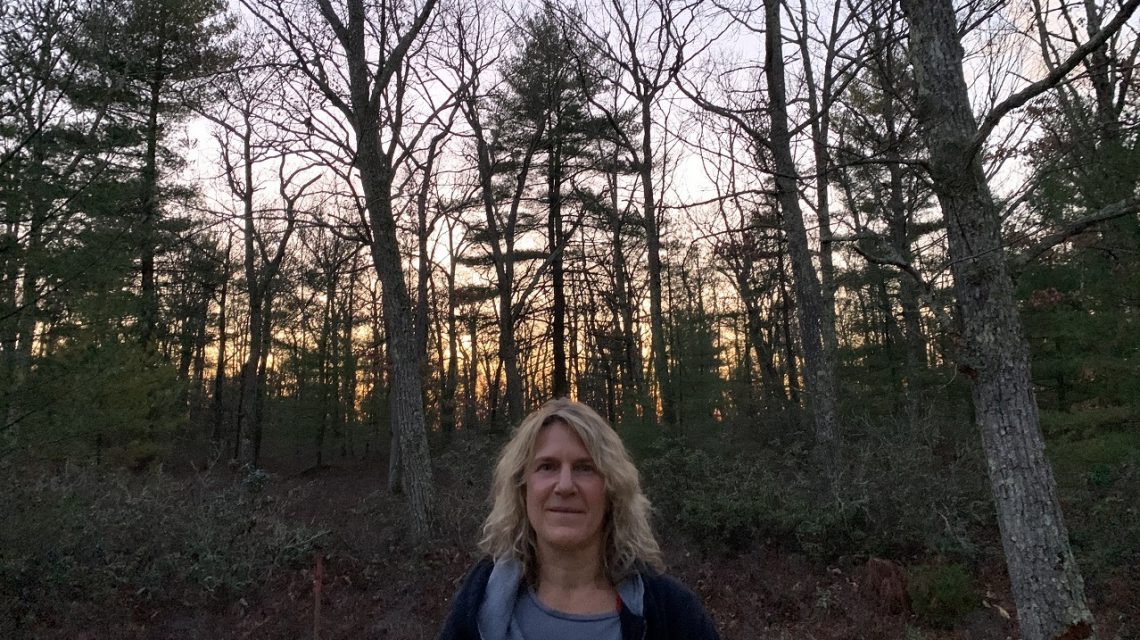Green Amendments ~ Rights of Nature ~ Youth Climate Litigation ~ Green New Deal
Green Amendments For The Generations is a unique environmental movement, but some wonder if it is another form of the Rights of Nature movement, confuse it with the Congressionally discussed Green New Deal or ask how it compares to state and federal youth-led litigation seeking constitutional protection of climate rights. While each of these initiatives are important, they are distinctly different concepts in terms of substance, strategy and impact.
Rights of Nature, a Green New Deal, and Youth Climate Litigation are all powerful and important movements that I admire. They each serve their own role in our collective efforts to move towards a cleaner and healthy world. The Rights of Nature movement is changing the way people think about their relation to the natural world. The Green New Deal offers aspirational environmental and economic goals to strive for. And the Youth Climate Litigation movement has inspired a new generation of climate activists and underscored the need for constitutional environmental protections. They have all helped to heighten and shape our public discourse around environmental protections. But there is one more growing national movement that is dramatically raising the expectations we have of our government for ensuring we all have a truly enforceable right to a clean and healthy environment, for natural resources protection, for addressing the climate crisis, and ensuring environmental and generational justice, and is also providing a constitutional pathway to hold our government accountable when they fail to meet these objectives … Green Amendments For The Generations.
The national Green Amendment movement is inspiring a new way of thinking and talking about environmental protection and is providing the transformational legal change needed to fully and enforce-ably address the wealth of environmental harms our communities face. Green Amendments are self-executing environmental rights amendments placed in the Bill of Rights section of our state and federal constitutions. When secured in constitutions, Green Amendments provide the legal strength necessary to protect the environmental rights and expectations of all generations; provide a pathway for ending environmental racism and sacrifice zones; provide a powerful tool for indigenous communities to protect their sacred lands and natural beliefs; and address the range of environmental issues in need of protection from water, to air, to climate, to ecosystem protection. At the same time, Green Amendments are inspiring bi-partisan as well as inter-generational support and are advancing the pathway for the systemic change necessary to truly provide environmental justice for all races, ethnicities and economically disadvantaged communities. The Green Amendment movement is strategically focused on state constitutions first, as we build the awareness and support essential for a federal amendment.
The Green Amendment movement is not only important independently, but it will raise up and support the Rights of Nature, Green New Deal, and Youth Climate litigation and help provide a path to lead those important efforts to victory. The Green Amendment Movement produces the type of systemic change that brings everybody to the table in the common cause of environmental protection and justice regardless of race, ethnicity, political party, economic status, or generation.
Green Amendments as compared to Rights of Nature
The Rights of Nature movement seeks to ensure that nature itself has a right to go to court to secure enforcement of existing environmental protection laws without the need to demonstrate a harmed individual or community. Whether secured through legislation or at the municipal level, rights of nature give nature standing in the courts, removing the need to show that a person has been harmed by the violation of law that is sought to be enforced. The goal of rights of nature is to strengthen the opportunity to enforce the laws that are on the books. But giving nature rights does not fill the gap where laws are weak or absent, which is where a Green Amendment could help.
Green Amendments – i.e., constitutional environmental rights – are people focused and strengthen the ability of people to access the courts to challenge government actions that infringe on their constitutional rights to a healthy environment or to challenge the failure of government to protect natural resources for the benefit of present and future generations.
While Rights of Nature provisions strengthen the ability to enforce current laws on the book and to challenge violations of those laws, Green Amendments operate differently. They strengthen environmental protection overall, can fill gaps in environmental protection laws, increase the obligations for scientific review and equitable treatment of all people regardless of race, ethnicity or socioeconomic status, and make clear the obligation of government to proactively protect natural resources for the benefit of all people and generations.
While they accomplish different goals and yield different impacts, both Rights of Nature provisions and Green Amendments are powerful forces for environmental protection.
Green Amendments as compared to Youth Climate Litigation.
Youth Climate Litigation provides a powerful pathway for our younger generations to rise up in the courts and demand critical climate change protections. Cases advancing at the state and federal level are seeking judicial decisions that read climate justice and rights into existing constitutional or legal language. Unfortunately, the constitutional and legal doctrines available are not clearly on point and so judges are being asked to stretch and mold legal concepts, language and laws to fit a scenario that they do not obviously cover. If ultimately successful, the newly molded legal doctrines and interpretations will expand the law to cover climate and provide critical protections, but there will still be critical gaps in environmental protection and justice that will need to be addressed.
Green Amendments, when passed, will provide a powerful new foundation to support Youth Climate litigation and environmental litigation in general. Green Amendments offer solutions for a wider array of environmental issues from contaminated water, to dangerous toxic releases, to harmful development causing flooding, while also bolstering critical climate change protections. Green Amendments also provide a clear and defined generational focus – clearly recognizing and protecting the environmental rights of future generations. And the careful crafting of a successful Green Amendment also provides powerful legal grounding for ending environmental racism.
Interestingly, some of the youth climate cases are seeking decisions that would implement the concepts and protections that are provided explicitly by a Green Amendment. The beauty of a Green Amendment is that we don’t have to hope the judges will read into existing law the kinds of protections that are provided by a Green Amendment but not clearly included in existing statutory, constitutional or common law; that is because the Green Amendment tells the judge how they must read the law if they want to comply with their judicial and constitutional obligations.
Among the most powerful benefits a constitutional Green Amendment can provide is the creation of a trust obligation for government officials which instills fiduciary duties of prudence, loyalty and impartiality. In practice this means that government actions and decisions must be informed by science and facts, ensures all communities are treated equitably so government can no longer target or sacrifice a single community with repeated environmental harm in order to better protect the interests of another community, ensures equitable generational protection, mandates a focus on prevention of environmental degradation at the beginning of the decision-making process rather than simple management at the end of the process, and mandates environmental protection and equity regardless of race, ethnicity, religion, income thereby ending environmental racism. In addition, Green Amendments provide protection for all natural resources rather than a sub-segment of the environment.
In a recent Oregon Youth Climate legal action, the youth urged the state courts to expand the state’s public trust doctrine to include the atmosphere, among other natural resources, and to interpret the doctrine to impose fiduciary obligations in line with those imposed on trustees of private trusts (such as money trusts). The Oregon Supreme court[1] declined to act on these legal arguments. The court stated:
“We hold that the public trust doctrine currently encompasses navigable waters and the submerged and submersible lands underlying those waters. We do not foreclose the possibility that the doctrine could expand to include other resources in the future, but the test that plaintiffs urge us to adopt sweeps too broadly.”
“We also decline, in this case, to adopt plaintiffs’ position that, under the public trust doctrine, the state has the same fiduciary duties that a trustee of a common-law private trust would have, such as a duty to prevent substantial impairment of trust resources.”
By contrast, when applying the Pennsylvania Green Amendment, the conservative Pennsylvania Supreme court[2] was clear that the Green Amendment language required the state to comply with traditional trustee obligations and that all natural resources were implicated:
“As a fiduciary, the Commonwealth has a duty to act toward the corpus of the trust — the public natural resources — with prudence, loyalty, and impartiality.“ (emphasis added)
“As trustee, the Commonwealth is a fiduciary obligated to comply with the terms of the trust and with standards governing a fiduciary’s conduct. The explicit terms of the trust require the government to “conserve and maintain” the corpus of the trust. See PA. CONST. art. I, § 27. The plain meaning of the terms conserve and maintain implicates a duty to prevent and remedy the degradation, diminution, or depletion of our public natural resources.”
New Mexico, like over 40 other states, has a provision that talks about environmental protection within its constitution, but it fails to provide Green Amendment level protection – in short it fails to recognize and protect environmental rights on par with other fundamental rights like speech and religion. As a result, the most recent effort to use the provision to secure higher constitutional justice for environmental protection was unsuccessful. In New Mexico’s climate justice case the state appellate court made clear that because New Mexico’s constitution in Article XX Section 21, similar to other constitutions across the nation, entrusts environmental protection to the legislature, it does not create individual environmental rights. Instead, the amendment empowers the legislature to define the key terms and protections offered by the amendment. The court took upon itself to add that if the public does not like how the legislature is doing its environmental protection job, “voters have the opportunity to exercise their desire for political change regarding complex environmental issues at the ballot box during each election cycle.”[3]
In the final analysis most states have constitutional language, public trust doctrines and laws that speak to environmental protection, but unless that constitutional language fulfills the criteria that would make it a Green Amendment, it will not provide the highest constitutional and legal protection to all aspects of the environment that are given to the other civil, human and political rights we hold dear.

Green Amendments as compared to the Green New Deal
With similar sounding names, the Green New Deal can be confused with Green Amendments, but they are entirely different efforts and ideas.
The Green New Deal is a package of policies and economic stimulus activities, programs, investments and goals designed to stimulate and advance good environmental business activities, workforce transformation, and social justice, often with a focus on addressing the climate crisis.
By contrast, Green Amendments are enforceable constitutional rights located in the Bill of Rights Section of a constitution and provide a legally recognized and enforceable right to clean water and air, a stable climate and healthy environments.
The Green New Deal is focused on seeking, securing and advancing good government programs; the Green Amendment is focused on enforceable constitutional law.
Passage of Green Amendments provide powerful support for advancing the programs, laws and goals of the Green New Deal – creating the kind of constitutional obligation and inspiration that can be used as grounding to advocate for, support and pass all aspects of the proposed Green New Deal.
Green Amendments are a powerful and protective pathway to higher level constitutional protection:
- Green Amendments strengthen current laws and how they can and should be interpreted, including by strengthening the obligation of government officials to consider the science and the impacts of decisions, such as permitting. Government decisions that do not consider the science and impacts can be constitutionally challenged.
- Green Amendments can add a claim when there is environmental degradation or harm — the constitutional right is a legal claim unto itself; just because government can demonstrate their actions complied with existing law does not mean they have demonstrated compliance with the constitutional obligation.
- Green Amendments can help fill gaps in the law when it comes to protecting air, water, climate or the environment. In areas of environmental protection where there are no applicable laws, if pollution or environmental degradation is infringing on environmental rights, a claim can be brought that is based on the constitutional right articulated in the Green Amendment. So, there can be a constitutional claim challenging pollution and degradation even if there is no applicable law – the constitutional claim is the legal claim.
- Green Amendments add strength to environmental justice claims because they create a duty to treat all communities equitably that must be part of the decision-making analysis and assessment.

This article was originally posted on December 7, 2020 but has recently been updated on March 31, 2021.
[1] Chernaik v. Brown, 367 Or. 143 (2020)
[2] Robinson Township, Delaware Riverkeeper Network, et al. v. Commonwealth, 83 A.3d 901 (2013)
[3] Sanders-Reed ex rel. Sanders-Reed v. Martinez, 350 P.3d 1221 (2015)




